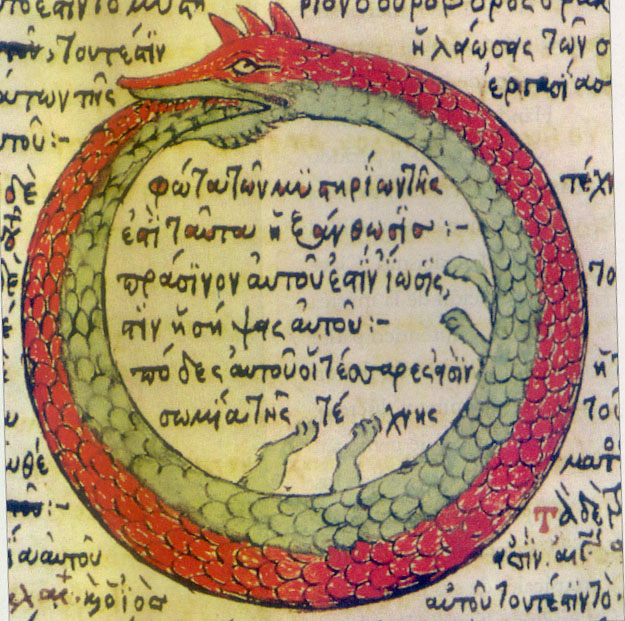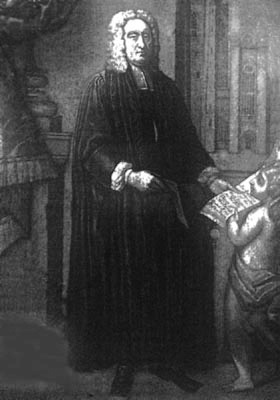|
Ad Infinitum
''Ad infinitum'' is a Latin phrase meaning "to infinity" or "forevermore". Description In context, it usually means "continue forever, without limit" and this can be used to describe a non-terminating process, a non-terminating ''repeating'' process, or a set of instructions to be repeated "forever," among other uses. It may also be used in a manner similar to the Latin phrase '' et cetera'' to denote written words or a concept that continues for a lengthy period beyond what is shown. Examples include: * "The sequence 1, 2, 3, ... continues ''ad infinitum''." * "The perimeter of a fractal may be iteratively drawn ''ad infinitum''." The 17th-century writer Jonathan Swift incorporated the idea of self-similarity in the following lines from his satirical poem ''On Poetry: a Rhapsody'' (1733): The vermin only teaze and pinch Their foes superior by an inch. So, naturalists observe, a flea Has smaller fleas that on him prey; And these have smaller still to bite 'em, And so proceed ''a ... [...More Info...] [...Related Items...] OR: [Wikipedia] [Google] [Baidu] |
Latin
Latin ( or ) is a classical language belonging to the Italic languages, Italic branch of the Indo-European languages. Latin was originally spoken by the Latins (Italic tribe), Latins in Latium (now known as Lazio), the lower Tiber area around Rome, Italy. Through the expansion of the Roman Republic, it became the dominant language in the Italian Peninsula and subsequently throughout the Roman Empire. It has greatly influenced many languages, Latin influence in English, including English, having contributed List of Latin words with English derivatives, many words to the English lexicon, particularly after the Christianity in Anglo-Saxon England, Christianization of the Anglo-Saxons and the Norman Conquest. Latin Root (linguistics), roots appear frequently in the technical vocabulary used by fields such as theology, List of Latin and Greek words commonly used in systematic names, the sciences, List of medical roots, suffixes and prefixes, medicine, and List of Latin legal terms ... [...More Info...] [...Related Items...] OR: [Wikipedia] [Google] [Baidu] |
Siphonaptera (poem)
"Siphonaptera" is a name usedFor example: to refer to the following rhyme by Augustus De Morgan ('' Siphonaptera'' being the biological order to which fleas belong): The rhyme appears in De Morgan's ''A Budget of Paradoxes'' (1872) along with a discussion of the possibilities that all particles may be made of clustered smaller particles, "and so down, for ever", and that planets and stars may be particles of some larger universe, "and so up, for ever". The lines derive from part of Jonathan Swift's long satirical poem "On Poetry: A Rapsody" of 1733: Lewis Fry Richardson adapted the poem to meteorology Meteorology is the scientific study of the Earth's atmosphere and short-term atmospheric phenomena (i.e. weather), with a focus on weather forecasting. It has applications in the military, aviation, energy production, transport, agricultur ... in 1922: See also * Self-similarity * Turtles all the way down References {{DEFAULTSORT:Siphonaptera English poems Poe ... [...More Info...] [...Related Items...] OR: [Wikipedia] [Google] [Baidu] |
Infinity
Infinity is something which is boundless, endless, or larger than any natural number. It is denoted by \infty, called the infinity symbol. From the time of the Ancient Greek mathematics, ancient Greeks, the Infinity (philosophy), philosophical nature of infinity has been the subject of many discussions among philosophers. In the 17th century, with the introduction of the infinity symbol and the infinitesimal calculus, mathematicians began to work with infinite series and what some mathematicians (including Guillaume de l'Hôpital, l'Hôpital and Johann Bernoulli, Bernoulli) regarded as infinitely small quantities, but infinity continued to be associated with endless processes. As mathematicians struggled with the foundation of calculus, it remained unclear whether infinity could be considered as a number or Magnitude (mathematics), magnitude and, if so, how this could be done. At the end of the 19th century, Georg Cantor enlarged the mathematical study of infinity by studying ... [...More Info...] [...Related Items...] OR: [Wikipedia] [Google] [Baidu] |
Turtles All The Way Down
"Turtles all the way down" is an expression of the problem of infinite regress. The saying alludes to the mythological idea of a World Turtle that supports a flat Earth on its back. It suggests that this turtle rests on the back of an even larger turtle, which itself is part of a column of increasingly larger turtles that continues indefinitely. The exact origin of the phrase is uncertain. In the form "rocks all the way down", the saying appears as early as 1838. References to the saying's mythological antecedents, the World Turtle and its counterpart the World Elephant, were made by a number of authors in the 17th and 18th centuries. The expression has been used to illustrate problems such as the regress argument in epistemology. History Background in Hindu mythology Early variants of the saying do not always have explicit references to infinite regression (i.e., the phrase "all the way down"). They often reference stories featuring a World Elephant, World Turtle, o ... [...More Info...] [...Related Items...] OR: [Wikipedia] [Google] [Baidu] |
The Song That Never Ends
"The Song That Doesn't End" is a self-referential and infinitely iterative children's song. The song appears in an album by puppeteer Shari Lewis titled ''Lamb Chop's Sing-Along, Play-Along'', released through a 1988 home video. It is a single- verse-long song, written in an infinite-loop motif in a march style, such that it naturally flows in a cyclical fashion, repeating the same verse over and over. It is still a very popular tune, typically sung during long car rides. The song was written by Shari Lewis' long time producer Norman Martin. Lyrics (The song repeats endlessly.) Variations Alternative versions of the song use "never ends", and use the plural "friends". Other minor discrepancies in the lyrics may be due to the song being passed in the oral tradition from kid-to-kid. Such differences include "It just goes on and on..." (line 2), "And we’ll continue" (line 4), " and they continued" (line 4), “this is the song that killed my friends” (line 2), and "and they ... [...More Info...] [...Related Items...] OR: [Wikipedia] [Google] [Baidu] |
Self-reference
Self-reference is a concept that involves referring to oneself or one's own attributes, characteristics, or actions. It can occur in language, logic, mathematics, philosophy, and other fields. In natural or formal languages, self-reference occurs when a sentence, idea or formula refers to itself. The reference may be expressed either directly—through some intermediate sentence or formula—or by means of some encoding. In philosophy, self-reference also refers to the ability of a subject to speak of or refer to itself, that is, to have the kind of thought expressed by the first person nominative singular pronoun "I" in English. Self-reference is studied and has applications in mathematics, philosophy, computer programming, second-order cybernetics, and linguistics, as well as in humor. Self-referential statements are sometimes paradoxical, and can also be considered recursive. In logic, mathematics and computing In classical philosophy, paradoxes were created b ... [...More Info...] [...Related Items...] OR: [Wikipedia] [Google] [Baidu] |
Recursion
Recursion occurs when the definition of a concept or process depends on a simpler or previous version of itself. Recursion is used in a variety of disciplines ranging from linguistics to logic. The most common application of recursion is in mathematics and computer science, where a function (mathematics), function being defined is applied within its own definition. While this apparently defines an infinite number of instances (function values), it is often done in such a way that no infinite loop or infinite chain of references can occur. A process that exhibits recursion is ''recursive''. Video feedback displays recursive images, as does an infinity mirror. Formal definitions In mathematics and computer science, a class of objects or methods exhibits recursive behavior when it can be defined by two properties: * A simple ''base case'' (or cases) — a terminating scenario that does not use recursion to produce an answer * A ''recursive step'' — a set of rules that reduce ... [...More Info...] [...Related Items...] OR: [Wikipedia] [Google] [Baidu] |
Mathematical Induction
Mathematical induction is a method for mathematical proof, proving that a statement P(n) is true for every natural number n, that is, that the infinitely many cases P(0), P(1), P(2), P(3), \dots all hold. This is done by first proving a simple case, then also showing that if we assume the claim is true for a given case, then the next case is also true. Informal metaphors help to explain this technique, such as falling dominoes or climbing a ladder: A proof by induction consists of two cases. The first, the base case, proves the statement for n = 0 without assuming any knowledge of other cases. The second case, the induction step, proves that ''if'' the statement holds for any given case n = k, ''then'' it must also hold for the next case n = k + 1. These two steps establish that the statement holds for every natural number n. The base case does not necessarily begin with n = 0, but often with n = 1, and possibly with any fixed natural number n = N, establishing the trut ... [...More Info...] [...Related Items...] OR: [Wikipedia] [Google] [Baidu] |
Augustus De Morgan
Augustus De Morgan (27 June 1806 – 18 March 1871) was a British mathematician and logician. He is best known for De Morgan's laws, relating logical conjunction, disjunction, and negation, and for coining the term "mathematical induction", the underlying principles of which he formalized. De Morgan's contributions to logic are heavily used in many branches of mathematics, including set theory and probability theory, as well as other related fields such as computer science. Biography Childhood Augustus De Morgan was born in Madurai, in the Carnatic Sultanate, Carnatic region of India, in 1806. His father was Lieutenant-Colonel John De Morgan (1772–1816), who held various appointments in the service of the East India Company, and his mother, Elizabeth (née Dodson, 1776–1856), was the granddaughter of James Dodson (mathematician), James Dodson, who computed a table of anti-logarithms (inverse logarithms). Augustus De Morgan became blind in one eye within a few months of his bi ... [...More Info...] [...Related Items...] OR: [Wikipedia] [Google] [Baidu] |
List Of Latin Phrases
This is a list of Wikipedia articles of Latin phrases and their translation into English. To view all phrases on a single, lengthy document, see: List of Latin phrases (full). Lists of pages * List of Latin phrases (A) * List of Latin phrases (B) * List of Latin phrases (C) * List of Latin phrases (D) * List of Latin phrases (E) * List of Latin phrases (F) * List of Latin phrases (G) * List of Latin phrases (H) * List of Latin phrases (I) * List of Latin phrases (L) * List of Latin phrases (M) * List of Latin phrases (N) * List of Latin phrases (O) * List of Latin phrases (P) * List of Latin phrases (Q) * List of Latin phrases (R) * List of Latin phrases (S) * List of Latin phrases (T) * List of Latin phrases (U) * List of Latin phrases (V) See also * Latin influence in English * Latinism Lists * List of abbreviations used in medical prescriptions * List of ecclesiastical abbreviations * List of Germanic and Latinate equivalents in English * List of Greek phrases * List of ... [...More Info...] [...Related Items...] OR: [Wikipedia] [Google] [Baidu] |
Self-similarity
In mathematics, a self-similar object is exactly or approximately similar to a part of itself (i.e., the whole has the same shape as one or more of the parts). Many objects in the real world, such as coastlines, are statistically self-similar: parts of them show the same statistical properties at many scales. Self-similarity is a typical property of fractals. Scale invariance is an exact form of self-similarity where at any magnification there is a smaller piece of the object that is similar to the whole. For instance, a side of the Koch snowflake is both symmetrical and scale-invariant; it can be continually magnified 3x without changing shape. The non-trivial similarity evident in fractals is distinguished by their fine structure, or detail on arbitrarily small scales. As a counterexample, whereas any portion of a straight line may resemble the whole, further detail is not revealed. Peitgen ''et al.'' explain the concept as such: Since mathematically, a fractal may sho ... [...More Info...] [...Related Items...] OR: [Wikipedia] [Google] [Baidu] |
Jonathan Swift
Jonathan Swift (30 November 1667 – 19 October 1745) was an Anglo-Irish writer, essayist, satirist, and Anglican cleric. In 1713, he became the Dean (Christianity), dean of St Patrick's Cathedral, Dublin, and was given the sobriquet "Dean Swift". His trademark deadpan and ironic style of writing, particularly in works such as ''A Modest Proposal'' (1729), has led to such satire being subsequently termed as "Swiftian". He wrote the satirical book ''Gulliver's Travels'' (1726), which became his best-known publication and popularised the fictional island of Lilliput and Blefuscu, Lilliput. Following the remarkable success of his works, Swift came to be regarded by many as the greatest satirist of the Georgian era, and one of the foremost prose satirists in the history of English literature. Swift also authored works such as ''A Tale of a Tub'' (1704) and ''An Argument Against Abolishing Christianity'' (1712). He originally published all of his works under pseudonyms—including L ... [...More Info...] [...Related Items...] OR: [Wikipedia] [Google] [Baidu] |





